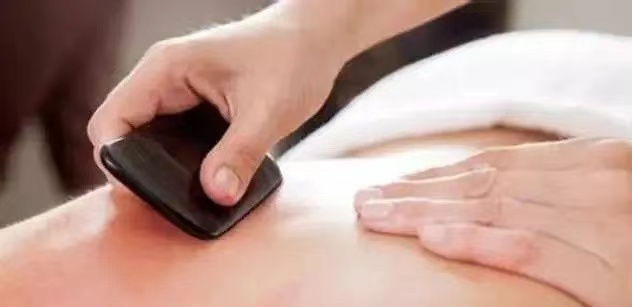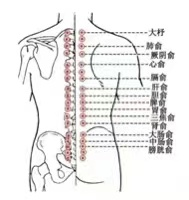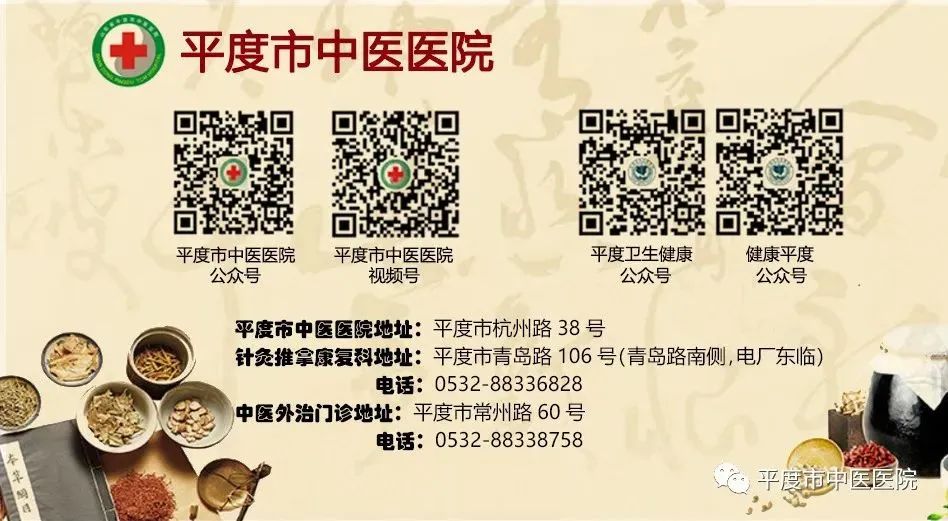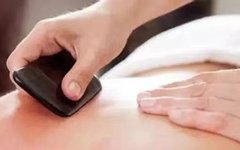Gua Sha is one of the traditional natural therapies in China.


 Back Gua Sha is based on the twelve meridians (shí èr jīng mài) and eight extraordinary vessels (qí jīng bā mài) of Traditional Chinese Medicine (TCM), following the principle of “treating the symptoms first”. It employs specific techniques to strongly stimulate the meridians, using specially designed Gua Sha tools made of materials such as buffalo horn or jade to scrape the skin in relevant areas, causing localized redness and the appearance of red millet-like or dark red petechiae, known as “Gua Sha marks”. This process helps to unblock the meridians, invigorate blood circulation, and regulate the body.Back Gua Sha can promote blood circulation, lymphatic circulation, and metabolism in the back, improve bodily issues, soothe the nervous system, and enhance overall health. It plays a role in adjusting Qi (qì), relieving fatigue, and boosting immune function.
Back Gua Sha is based on the twelve meridians (shí èr jīng mài) and eight extraordinary vessels (qí jīng bā mài) of Traditional Chinese Medicine (TCM), following the principle of “treating the symptoms first”. It employs specific techniques to strongly stimulate the meridians, using specially designed Gua Sha tools made of materials such as buffalo horn or jade to scrape the skin in relevant areas, causing localized redness and the appearance of red millet-like or dark red petechiae, known as “Gua Sha marks”. This process helps to unblock the meridians, invigorate blood circulation, and regulate the body.Back Gua Sha can promote blood circulation, lymphatic circulation, and metabolism in the back, improve bodily issues, soothe the nervous system, and enhance overall health. It plays a role in adjusting Qi (qì), relieving fatigue, and boosting immune function.
Indications for Back Gua Sha

 Back Gua Sha is suitable for pain-related diseases, colds and fevers, lower back pain, sub-health conditions, cervical spondylosis, and mild dysfunction of the internal organs.
Back Gua Sha is suitable for pain-related diseases, colds and fevers, lower back pain, sub-health conditions, cervical spondylosis, and mild dysfunction of the internal organs.

Precautions for Back Gua Sha


Although Back Gua Sha has many benefits, there are precautions to consider.
1. During Back Gua Sha, it is important to avoid wind and keep warm.2. The process of Gua Sha consumes some of the body’s fluids. Drinking a cup of warm water after Gua Sha not only replenishes the lost fluids but also accelerates the elimination of metabolic waste.3. It is advisable not to bathe within four hours after Back Gua Sha.4. After Back Gua Sha, the skin may experience slight pain or a burning sensation, which is a normal phenomenon.5. Not everyone can undergo Gua Sha. If there are boils, broken skin, sores, or rashes on the back, Gua Sha should be avoided to prevent infection and spreading. Individuals with severe cardiovascular diseases, liver or kidney dysfunction, or generalized edema should also refrain from Gua Sha, as it may worsen their condition.6. Care should be taken with the technique during Gua Sha; the pressure should be appropriate, and one should not force the appearance of Gua Sha marks to avoid skin damage.
END
Contributed by: Wang Longhua
Edited by: Jing Shuo
Reviewed by: Guo Deli
Checked by: Jin Lihong


